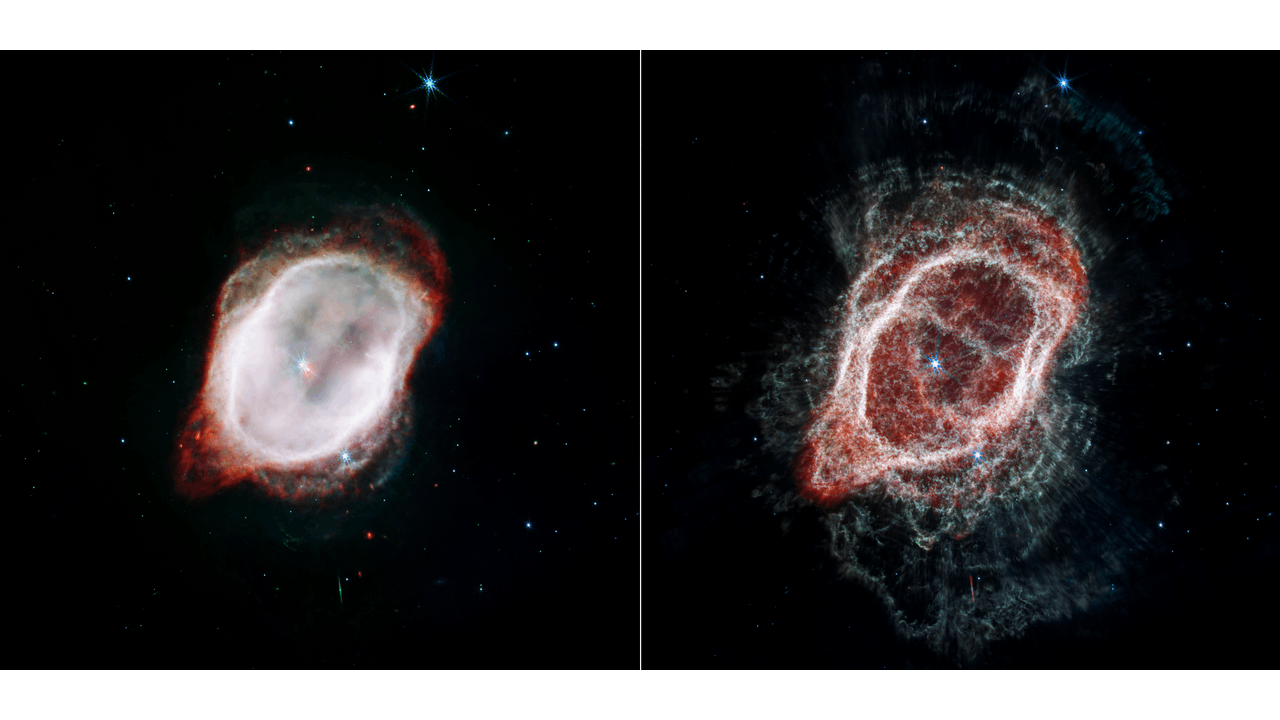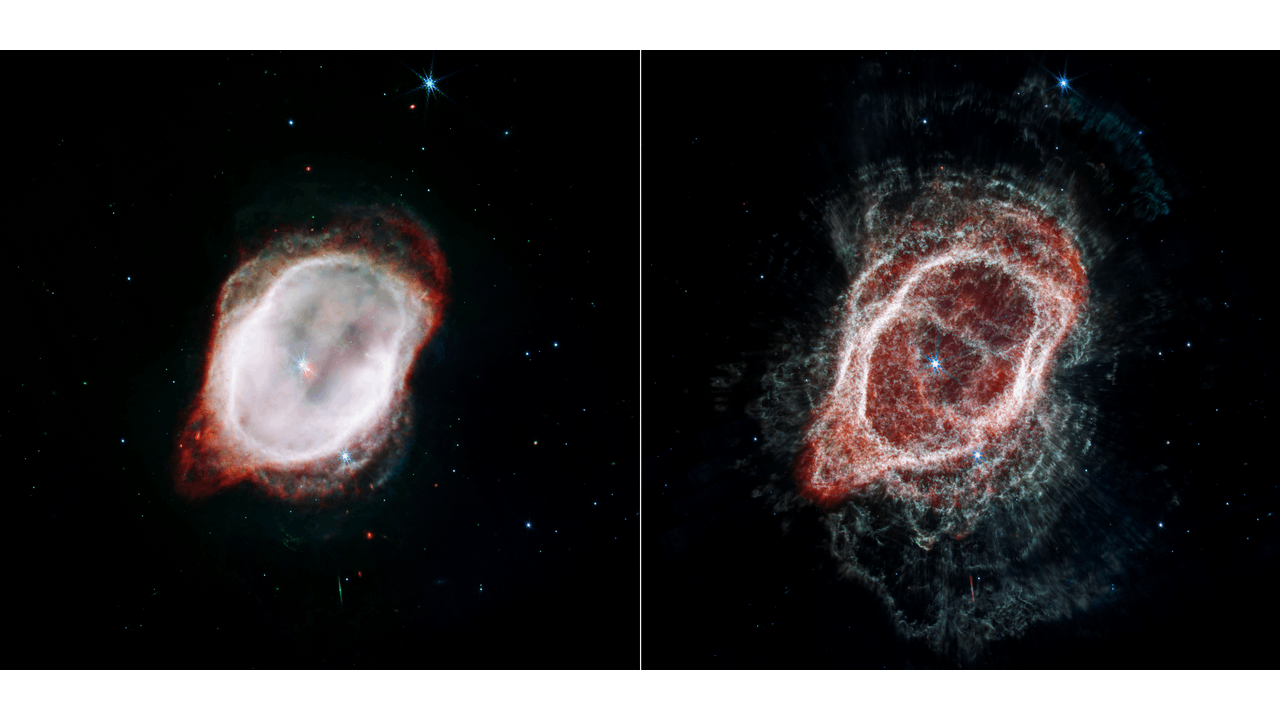
An ensemble of hidden stars are finally getting credit for the Southern Ring Nebula, thanks to new James Webb Space Telescope (JWST) data gathered in June.
The mesmerizing nebula, located between 2,000 and 2,500 light years away in the constellation Vela, famously appeared as one of JWST’s first science targets. And now, astronomers have learned it is the final product of not one, or two, but at least five stars. Most of the labor is from the dim red star at the center of this nebula and its newly-revealed companions. But, the vibrant bright-blue star at the center also offers new scientific opportunities, when it helped astronomers glean that the dim red star was about three times the size of the Sun before this nebula emerged.

‘A stellar quartet’
“Including the previously known A-type visual companion, the progenitor of the NGC 3132 planetary nebula [the Southern Ring Nebula] must have been at least a stellar quartet,” a team of 69 astronomers wrote in a study published Thursday in the journal Nature Astronomy.
The red dying star is surrounded by some of its own former dust. Other stars then played with this material. “We think all that gas and dust we see thrown all over the place must have come from that one star, but it was tossed in very specific directions by the companion stars,” study author Joel Kastner states in a JWST announcement of the study.
According to JWST officials, the “opposing bumps” visible at the edges of the Southern Ring Nebula formed from two-sided jets, which came about as the red star interplayed with one or two smaller stars.
One launched the jets. Just as it was slowing down its activity, it added dust to the mix by shedding.
The other close companion stirred these jets. As a result of visiting the red star multiple times, it created “the wavy shapes we see today at the edges of the gas and dust,” JWST officials wrote.

A third hidden star might have generated the system of rings that make the Southern Ring Nebula so unique. According to JWST officials, it “skew[ed] the evenly balanced ejections like spin art,” by agitating the jets of the first newly-revealed star. JWST officials described this star’s gas-and-dust meddling as “like a spatula running through batter in the same direction each time, generating the enormous set of rings in the outer reaches of the nebula.”
These stars are now hiding in the central glare, or merged with the dying red star.
The bright white-blue star
But the most visible star in the scene — the bright white-blue star — also revealed new information.
“New measurements of the A-type visual companion allow us to derive the value for the mass of the progenitor of a central star with excellent precision,” according to the study.
Before it sloughed dust and gas, the red star was once roughly 2.86 times the mass of the Sun. Now, it’s shrunk to just 60 percent of the Sun’s mass.
JWST officials described this finding as a “critical piece of evidence.” The initial mass helps astronomers reconstruct the scene and grasp what led to the nebula’s current shape.
More than just a pretty sight
“These results serve as pathfinders for future JWST observations of planetary nebulae, providing unique insight into fundamental astrophysical processes including colliding winds and binary star interactions, with implications for supernovae and gravitational-wave systems,” the study authors wrote.
This study came from the JWST’s Early Release Observations. And there is more science to come from the telescope. Last month, the Space Telescope Science Institute put out a call for research proposals for JWST’s Cycle 2.







